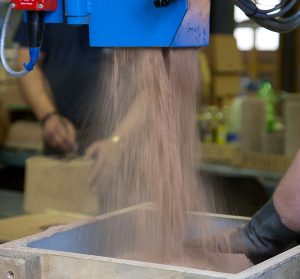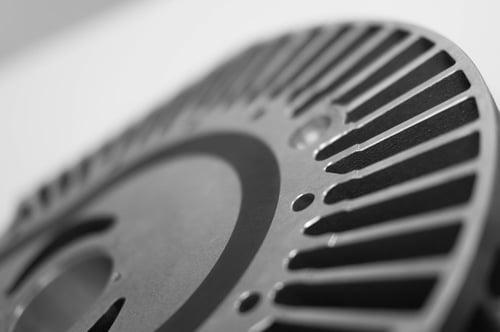How to create a good sand mould (part 1)
Published - 16th May 2018
Sand casting is one of the most popular metal working processes used around the world. The sand mould, which contains the cavity into which the molten metal is poured, plays a crucial part in this process, influencing the final shape, texture and dimensional accuracy of the casting.

In this blog, we’ll be looking at the critical ingredients involved in making a good sand mould.
High-quality sand
The first and most obvious element is the sand. At Haworth Castings, we use a high-grade silica sand, which is very resistant to the high temperatures involved in metal casting. The sand is selected carefully as the size and shape of the grains have a critical impact on the surface finish of the casting.
At Haworth Castings, we use 100% thermally reclaimed sand (i.e. recycled) rather than kiln dried – reflecting the importance that we place on being an environmentally aware and responsible foundry business.
Keeping the sand dry
Our sand is stored in a silo in the foundry to keep it dry. This is because dampness can cause the sand mould to split but, most importantly, due to the safety risk to our foundry personnel if hot molten metal mixes with any moisture in the mould.
Choosing the right chemical additives
To make the mould, the sand is mixed with a resin binder (to hold the sand particles together) and a catalyst. At Haworth Castings, we use Poliset cold-set binders. The mixture needs to have sufficient strength to withstand the force of the molten metal as it fills the sand mould.
The choice of binder and chemical catalyst is important, but the quantity is also key. We will be looking in more detail at the importance of the concentration of these additives in our next blog.
More broadly, the sand mixture plays a vital role in the metal casting process, contributing to:
- high refractory strength – for the mould to hold its shape and withstand the high temperatures involved
- chemical resistivity – ensuring that the mixture does not react chemically with the aluminium alloy in the mould
- permeability – allowing gasses, air and steam to escape and preventing defects such as blow holes
- flowability – ensuring that the sand flows to all parts of the mould
- collapsibility – ensuring that the sand can be separated easily from the casting
- recyclability – allowing the sand to be reused in future casting work[1]
Using high-quality ingredients helps to ensure a high-quality casting. In part 2, we will look at some of the other critical factors that influence this process.
Haworth Castings produces high-precision aluminium sand castings for a wide range of sectors. To find out more about our capabilities, please call us today on +44 (0)1794 512685 or email us: sales@haworthcastings.co.uk
[1] Some information derived from Rao, Metal Casting – Principles and Practice (1996)





